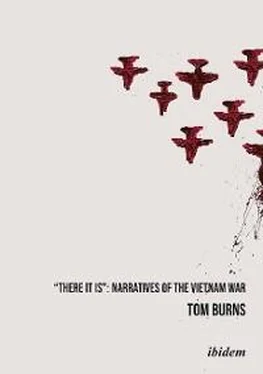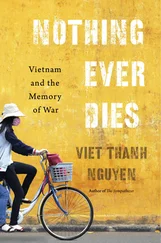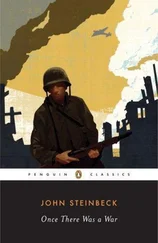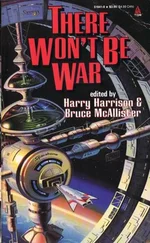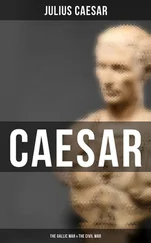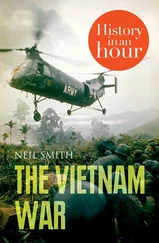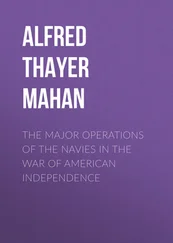Tom Burns - There It Is - Narratives of the Vietnam War
Здесь есть возможность читать онлайн «Tom Burns - There It Is - Narratives of the Vietnam War» — ознакомительный отрывок электронной книги совершенно бесплатно, а после прочтения отрывка купить полную версию. В некоторых случаях можно слушать аудио, скачать через торрент в формате fb2 и присутствует краткое содержание. Жанр: unrecognised, на английском языке. Описание произведения, (предисловие) а так же отзывы посетителей доступны на портале библиотеки ЛибКат.
- Название:There It Is: Narratives of the Vietnam War
- Автор:
- Жанр:
- Год:неизвестен
- ISBN:нет данных
- Рейтинг книги:5 / 5. Голосов: 1
-
Избранное:Добавить в избранное
- Отзывы:
-
Ваша оценка:
- 100
- 1
- 2
- 3
- 4
- 5
There It Is: Narratives of the Vietnam War: краткое содержание, описание и аннотация
Предлагаем к чтению аннотацию, описание, краткое содержание или предисловие (зависит от того, что написал сам автор книги «There It Is: Narratives of the Vietnam War»). Если вы не нашли необходимую информацию о книге — напишите в комментариях, мы постараемся отыскать её.
There It Is: Narratives of the Vietnam War — читать онлайн ознакомительный отрывок
Ниже представлен текст книги, разбитый по страницам. Система сохранения места последней прочитанной страницы, позволяет с удобством читать онлайн бесплатно книгу «There It Is: Narratives of the Vietnam War», без необходимости каждый раз заново искать на чём Вы остановились. Поставьте закладку, и сможете в любой момент перейти на страницу, на которой закончили чтение.
Интервал:
Закладка:
52Neilson, Jim, Warring Fictions: American Literary Culture and the Vietnam War Narrative (Jackson, Miss.: University Press of Mississippi, 1998), p. 87.
53Paraphrased from Renny Christopher’s comments on Mankiewicz’s film, in Pratt’s Viking Critical Edition, p. 308.
54Qtd. from Judith Adamson, Graham Greene and the Cinema (Norman, OK: Pilgrim Books, 1984), p. 88.
55Neilson, Warring Fictions, p. 87.
56Neilson, Warring Fictions, pp. 87-88.
57Gordon, Haim, Fighting Evil: Unsung Heroes in the Novels of Graham Greene (Westport, Conn.: Greenwood Press, 1997), pp. 30, 36. Qtd. by Neilson, pp. 87-88.
58Lederer, William J., and Eugene Burdick, The Ugly American (New York: W.W. Norton, 1958). Page numbers given in parenthesis refer to the Crest (1960) paperback edition.
59Schulzinger, A Time for War, p. 98.
60Neilson, Warring Fictions, p. 94.
61Schulzinger, A Time for War, p. 98.
62Sheehan, A Bright Shining Lie, p. 75.
63Neilson, Warring Fictions, pp. 95-96.
64Schulzinger, A Time for War, p. 98.
65Neilson, Warring Fictions, p. 92.
66Pratt, Bibliographic Commentary for Reading the Wind, p. 126.
67Sheehan, A Bright Shining Lie, p. 42.
68Sheehan, et al., The Pentagon Papers, p. 17.
69Bosse, M.J., The Journey of Tao Kim Nam (Garden City, NY: Doubleday, 1959), p. 190. Further page numbers referring to this edition will be inserted within parentheses in the text.
70Short, Anthony, The Origins of the Vietnam War (London: Longman, 1989), p. 34.
71Greene, Ways of Escape, qtd. In Pratt, Viking Critical Edition, p. 480.
72Lartéguy, Jean, Yellow Fever, 1962, translated by Xan Fielding (New York: Dutton, 1965), p. 23. Further page numbers referring to this edition will be inserted within parentheses in the text.
73Buttinger, Joseph, Vietnam: A Dragon Embattled (New York: Praeger, 1967), p. 380.
74Sullivan, Marianna P. France’s Vietnam Policy: A Study in French-American Relations (Westport, Conn.: Greenwood Press, 1978), pp. 52-53.
75According to Young, The Vietnam Wars, p. 49, the fighting broke out on April 27, 1955, although the novel cites April 25.
76Just, Ward, A Dangerous Friend. Further references to thus edition of the novel will be inserted within parentheses in the text.
Chapter Two
Fictional History & Historical Fiction: The Fall of Diem
South Vietnam was an American invention, conceived
by Dwight Eisenhower but delivered by John Kennedy
(Loren Baritz, Backfire ).
South Vietnam was essentially the creation of the United States
( The Pentagon Papers ).
i. President Ngo Dinh Diem
The major sign of the failure of the US project of nation-building in South Vietnam was the fall of its American-chosen leader, Ngo Dinh Diem. In this chapter, four early novels that deal with Diem’s dramatic final days will be examined. They share roughly the same time frame: the seven-month period from the outbreak of the Buddhist crisis in May 1963, which both exposed and brought to a head public dissatisfaction with Diem’s regime, to his US-assisted assassination in November 1963. In this first section, an overall chronological review of Diem’s career will be given to suggest why Diem was assassinated; more specifically, the events leading up to his death will clarify how the assassination came about. The American involvement in the coup d’état that led to the assassination of Diem and his brother Nhu is, according to Anthony Short, “probably the most painful and controversial episode of the Vietnam War,” but was also “arguably, something that was inherent in the logic of US intervention.” 1
In all fairness, Diem’s obstacles to governing were formidable: war lords and competing religious sects, a powerful bandit organization (Binh Xuyen), the influx of nearly a million refugees to southern Vietnam from the north, coup factions within his own army, and northern Viet Minh cadres left behind in the south after the division of the country that were bent on inspiring insurrection. Diem took steps to deal with these problems and solidify his position in accordance with the following time-table. On June 18, 1954, he became Prime Minister of South Vietnam. The exodus of people from the north, mainly Catholics, with the aid of the US Navy, to South Vietnam began the same year, and numbered nearly a million people, furnishing Diem with a ready-made anti-Communist constituency in the south. 2US policymakers affirmed support for his regime while encouraging him to seek a broader basis of political support and to establish more democratic institutions. 3Diem gained control of the military by suppressing the rebellion of his Chief of Staff, General Hinh, 4and began to consolidate his political power by appointing members of his family to the cabinet. He agreed to the needed reforms stipulated in a letter from President Eisenhower (October 24, 1954) as a pre-condition to American aid, 5all of which went directly to Saigon. Diem launched the first of a series of agricultural reform measures (February 1955), but they resulted in more inequalities than before and created unrest among the peasants, which the Communist opposition exploited to its advantage. 6
Diem’s forces did battle with the Binh Xuyen and the sects (March-May 1955)—action that is portrayed in two of the novels examined in Chapter One. 7Although Secretary of State Dulles and General Collins discussed replacing Diem, his champion Edward Landsdale urged the embassy to continue supporting him. The French, British, and Americans held talks in Paris (May 7-13, 1955), agreeing to support Diem’s government but expressing the wish to see it more representative. The following day, Diem declared that he was not bound by decisions made at conferences in which he had not participated. 8He launched, however, a successful offensive against the Hoa Hao sect (June 1955) and broke its resistance. Pham Van Dong, the foreign minister of North Vietnam, proposed consultations with the south to prepare for the nationwide elections stipulated by the Geneva Accords for July 1956. Diem replied in a broadcast (July 6, 1955) that since the accords were not signed, South Vietnam was not bound by them. 9
The US leadership, including President Eisenhower, did not believe that if Ngo Dinh Diem ran he could defeat Ho Chi Minh, who was popularly perceived as the national liberator from foreign rule, both Japanese and French. For his part, Senator John F. Kennedy declared that free elections could not be held, for the results would inevitably be stacked against the South. 10 Life magazine, published by the staunchly anti-Communist Catholics Henry and Claire Booth Luce, gave credence to the American lack of confidence in Diem when (in Life’s issue of May 13, 1957) it considered Diem’s refusal to hold elections as one of his greatest achievements, because the refusal would prevent his country from committing “national suicide.” 11In a rigged referendum abetted by Landsdale (October 1955), in which Diem received one-third more votes in Saigon than there were registered voters, he deposed Bao Dai and proclaimed the Republic of Vietnam, with himself as President, Prime Minister, Defense Minister, and Supreme Commander of the Armed Forces. The new regime was immediately recognized by the US, five European and three Asian nations. 12
By January 1956, Diem’s ruthlessness in purging what remained of Viet Minh cells in the south did not enhance his popularity in his own country and lost many potential allies. 13In Diem’s visit to the United States (May 5-19, 1957), Eisenhower called him the “miracle man” of Asia. 14Guerrillas immediately began a campaign of assassination of South Vietnamese officials (over 400 by the year’s end) that was meant to disrupt his government. He reacted by appointing more military men to administrative positions, which indirectly helped the guerrillas through the neglect of the population’s social and economic problems. 15With the resettlement of the northern refugees, Diem enjoyed perhaps the only popular support for his regime during the years 1955-57, but thereafter his policies only generated discontent. 16At a certain point, the US Military Assistance Advisory Group (MAAG) took up the training of the Army of the Republic of Vietnam (ARVN), 17and South Vietnam became, in effect, a client state of the US. Millions of dollars in aid, most of which went to the military, poured into South Vietnam annually, and were mostly spent on maintaining Diem and his family in power. 18
Читать дальшеИнтервал:
Закладка:
Похожие книги на «There It Is: Narratives of the Vietnam War»
Представляем Вашему вниманию похожие книги на «There It Is: Narratives of the Vietnam War» списком для выбора. Мы отобрали схожую по названию и смыслу литературу в надежде предоставить читателям больше вариантов отыскать новые, интересные, ещё непрочитанные произведения.
Обсуждение, отзывы о книге «There It Is: Narratives of the Vietnam War» и просто собственные мнения читателей. Оставьте ваши комментарии, напишите, что Вы думаете о произведении, его смысле или главных героях. Укажите что конкретно понравилось, а что нет, и почему Вы так считаете.
